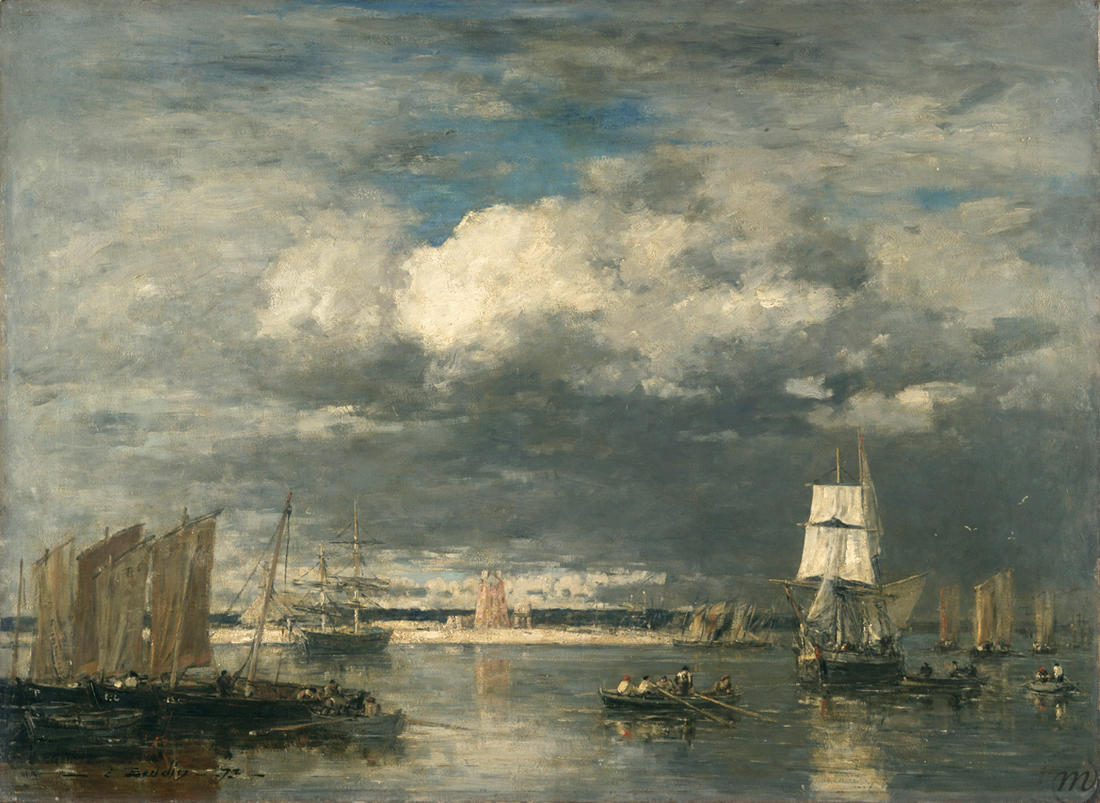Brittany and Normandy became his preferred playground from 1857. Between 1870 and 1873, he remained faithful to Camaret. The wild, elusive light of this small port in Finistère focused all his efforts. He set out to capture the changing nature of the light and its fleeting bursts on the landscape. The setting is barely inhabited. Human activity seems secondary to the challenge he set himself: to capture the sky on his canvas.
Of course, the sea is present. But ultimately, isn't the expanse of water in the foreground simply there to mirror the sky? Three-quarters of the composition is occupied by masses of clouds that collide in a play of chiaroscuro, punctuated by a patch of sunlight in the middle. The surface of the water appears very smooth compared to all the celestial agitation. The presence of a few large sailing ships reminds us of 17th-century Dutch seascapes. This stormy sky is a marvellous distillation of Boudin's art, which carries the seeds of modern painting.
There are four other views of the port of Camaret, including one in the Musée d'Orsay. The Lille version is arguably the most powerful. It possesses luminous, tactile qualities that make it a masterpiece of early Impressionism.

Brittany and Normandy became his preferred playground from 1857. Between 1870 and 1873, he remained faithful to Camaret. The wild, elusive light of this small port in Finistère focused all his efforts. He set out to capture the changing nature of the light and its fleeting bursts on the landscape. The setting is barely inhabited. Human activity seems secondary to the challenge he set himself: to capture the sky on his canvas.
Of course, the sea is present. But ultimately, isn't the expanse of water in the foreground simply there to mirror the sky? Three-quarters of the composition is occupied by masses of clouds that collide in a play of chiaroscuro, punctuated by a patch of sunlight in the middle. The surface of the water appears very smooth compared to all the celestial agitation. The presence of a few large sailing ships reminds us of 17th-century Dutch seascapes. This stormy sky is a marvellous distillation of Boudin's art, which carries the seeds of modern painting.
There are four other views of the port of Camaret, including one in the Musée d'Orsay. The Lille version is arguably the most powerful. It possesses luminous, tactile qualities that make it a masterpiece of early Impressionism.